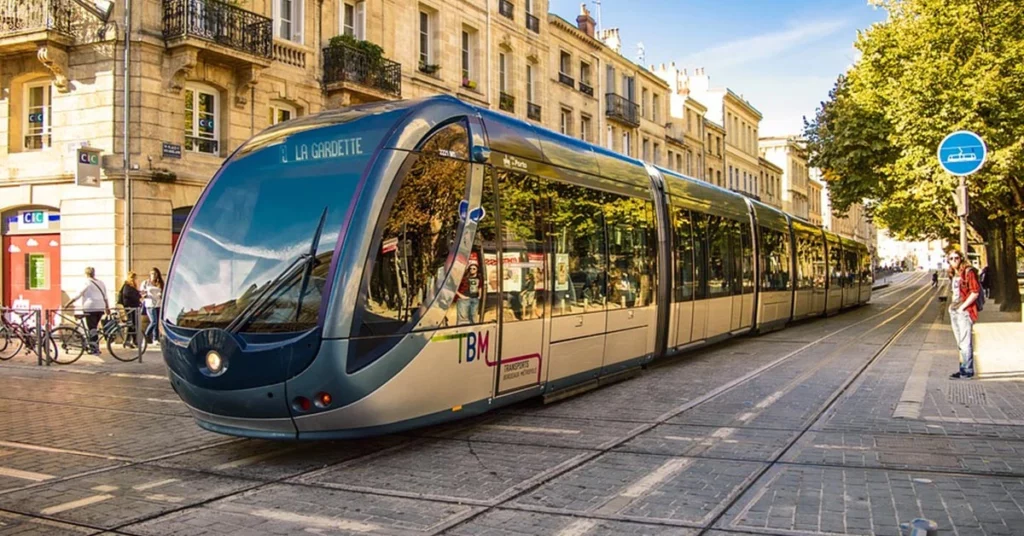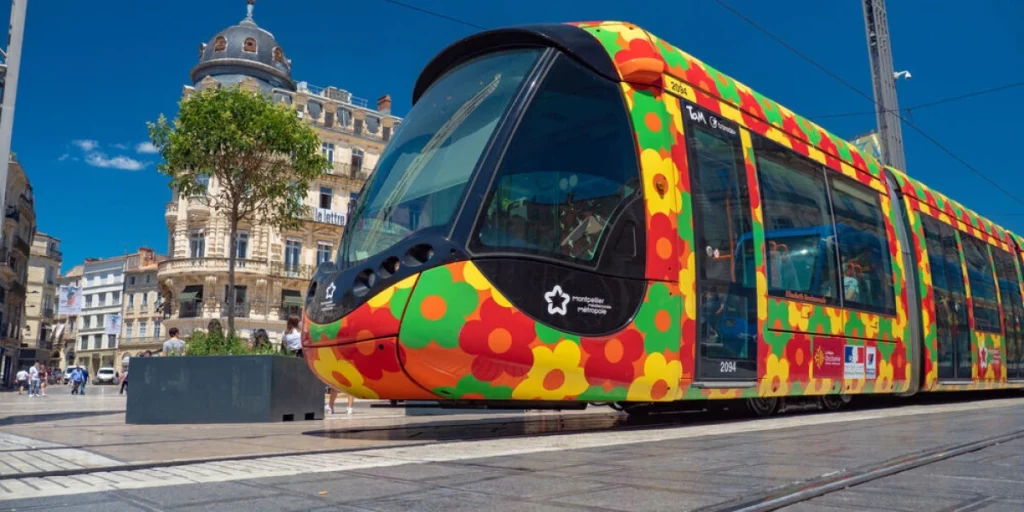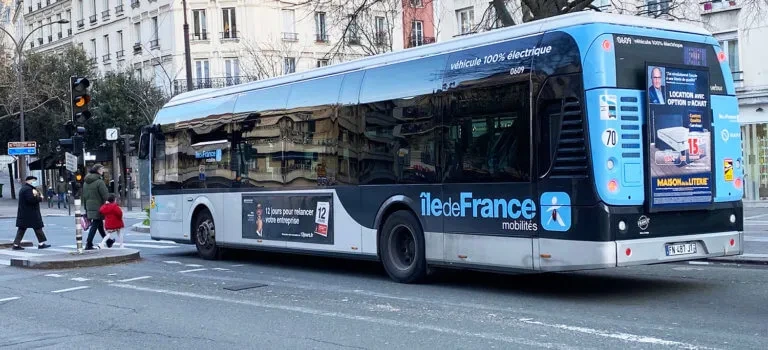
French Public Transport:
The Complete Guide
Table of Contents
Navigating France efficiently requires understanding its public transport system. Whether you are a traveler exploring cities like Paris, Lyon, or Marseille, or a resident commuting daily, France offers an extensive network of metros, trams, buses, regional trains (TER), and high-speed TGVs. This guide is designed to provide a comprehensive overview of French public transit, from its history to city-specific networks, innovations, and practical advice on ticketing, apps and trip planning.
Using public transport is often the most efficient, affordable, and eco-friendly way to move around France. The systems are designed to be accessible for residents, convenient for tourists, and adaptable to different travel needs, whether commuting to work, exploring a new town, or traveling across regions.
1. Introduction to French Public Transports
France boasts one of the most extensive public transit networks in Europe, connecting major urban centers, regional towns, and even rural areas. Knowing how the system works allows travelers to save money, reduce travel time, and enjoy more sustainable mobility options. For newcomers, understanding tickets, passes, applications and schedules can make the difference between a stressful journey and a smooth experience.
This guide covers:
The history and development of public transportation in France
City-specific mobility networks and ticketing systems
Regional and intercity rail services, including TGV and TER
Innovations in eco-mobility and smart ticketing
Practical advice for travelers, including apps, accessibility, and journey planning
With this knowledge, both tourists and residents can plan efficient trips, discover localities in depth, and make the most of the French public transport experience.
2. History and Evolution of Public Transportation in France
Early Transportation
Public transport in France began in the early 19th century with the construction of lines connecting Paris to surrounding towns. Soon after, horse-drawn trams appeared in cities like Paris, Lyon, and Marseille, providing an affordable solution for urban mobility. These early transit systems were the foundation of today’s modern metro and tramway systems, and they played a key role in shaping city layouts.
Electrification and Urban Expansion
By the late 19th century, cities started electrifying tramways, replacing horse-drawn vehicles with electric trams that could carry more passengers faster and more reliably. During the same period, buses emerged as a flexible alternative, especially for routes that could not be served by tramway tracks. In 1900, Paris inaugurated its first metro line (Line 1), which became a model for other towns worldwide. Other French localities quickly followed, expanding their own networks and integrating trams, buses, and early rail services.
Post-War Modernization
After World War II, France invested heavily in rebuilding and modernizing public transport. Metro systems expanded in cities like Paris, Lyon, and Marseille, while suburban RER lines were built to connect Paris with its growing suburbs. Localities also integrated bus and tramway networks, creating multi-modal systems that improved accessibility across urban areas. These changes laid the foundation for efficient public transport in modern France.
High-Speed Rail Revolution
The 1980s introduced the TGV (Train à Grande Vitesse), which revolutionized intercity travel. Major cities like Lyon, Bordeaux, Marseille, and Strasbourg became accessible in record time, transforming both domestic travel and tourism. Today, the SNCF network encompasses TGV, TER, and Intercités, connecting almost every region of France efficiently.
21st-Century Innovations
Modern French transport focuses on sustainability, accessibility, and digital innovation:
Electric buses reduce carbon emissions in urban areas
Smart ticketing systems with mobile applications simplify payments
Integrated multi-modal systems allow seamless switching between metros, buses, tramways and railway services.
Real-time trip planning and digital information displays help travelers avoid delays
These improvements benefit both residents and tourists, making it easier to explore cities and regions while minimizing environmental impact.

3. Understanding the Components of French Public Transport
French public transport consists of multiple interconnected systems, each serving different travel needs.
Metro
Metro lines provide dense coverage in major urban centers like Paris, Lyon, and Marseille. Metros operate frequently, with intervals as short as 2–3 minutes during peak hours in Paris, allowing rapid movement across neighborhoods. Metro stations are equipped with ticket machines, information screens, and accessibility features, including elevators and tactile guidance for visually impaired passengers.
Tram
Trams complement metros and buses by connecting less central districts. Towns such as Lyon, Bordeaux, and Montpellier have modern tram networks, often integrated with metro and bus services. Tramways are ideal for tourists and residents alike, offering scenic routes across city centers and connecting to cultural and historical landmarks.
Bus
Buses cover areas where metros or trams are unavailable, including suburban neighborhoods and rural towns. They are flexible and reliable, often the only option in smaller towns. Modern buses increasingly use electric or hybrid engines, contributing to eco-friendly urban mobility. Bus tickets are often valid on tramways and city applications provide schedules, live tracking, and route planning.
Train and TGV
Regional and high-speed trains are essential for intercity travel. TER lines serve local routes and connect suburbs to city centers. Intercités lines provide medium-distance connections, while TGV lines link major towns quickly. High-speed trains allow travel from Paris to Lyon in about 2 hours, Paris to Marseille in around 3 hours, and reach many destinations across France efficiently.
RER
The RER system, primarily around Paris, connects suburbs to the city center and integrates with the subway. It is used heavily by commuters and tourists needing to reach airports or distant neighborhoods. RER lines cover long distances, reduce congestion on the metro, and provide access to popular attractions like Disneyland Paris.
Ticketing
French transit systems use a variety of ticketing options:
Single-use tickets for occasional trips
Multi-day or weekly passes for residents and tourists
Contactless cards like Navigo in Paris
Mobile application for digital ticketing and real-time validation
These options allow travelers to choose the most convenient and cost-effective solution for their travel needs.
4. City-Specific Transport Networks
Every French localities operates its own network with unique tickets, fares, and mobile apps, adapted to local needs.
Paris
Metro, RER, tramways, bus Tickets: Single tickets, Paris Visite, Navigo cards
App/Website: RATP, Île-de-France Mobilités
Special Features: Dense coverage, multiple interchange stations, integrated fare zones Tips: Multi-day passes are ideal for tourists to explore attractions without worrying about fares. Applications provide real-time schedules, line alerts, and ticket purchases.
Lyon
Metro, tramways, bus (TCL) Tickets: Single rides, multi-day passes, student discounts
App/Website: TCL
Tips: Trams and buses cover areas outside the metro system, making multi-modal travel simple. Applications show live departures and help optimize routes.
Marseille
Metro, tramways, bus (RTM) Tickets: Paper tickets, mobile options
App/Website: RTM
Tips: Buses reach suburbs and districts not served by metro. Apps provide updates on delays, best routes, and ticket purchases.
Bordeaux
Tramways, bus, river shuttle Bat³
App/Website: TBM
Tips: Trams cover central routes, while buses and river shuttles complement transport in outlying areas. Mobile applications allow digital ticketing and journey planning.
Montpellier
Tramways, bus (TaM)
App/Website: TaM
Tips: Trams are the backbone; buses cover residential neighborhoods. Applications provide real-time information and route options.
Other Major Cities
Nice: Tram, bus (Lignes d’Azur)
Lille: Metro, tram, bus (Transpole)
Strasbourg: Tram, bus (CTS)
Nantes: Tram, bus (Tan)
Rennes: Metro, bus (STAR)
Toulouse: Metro, tram, bus (Tisséo)
Grenoble: Tram, bus (TAG)
Each city’s app provides real-time schedules, journey planning, and mobile ticketing, making it easy to navigate, even for newcomers.
5. SNCF – Intercity and Regional Trains
The SNCF network is essential for connecting towns, cities, and regions across France. It includes multiple types of trains, each designed to meet different travel needs:
TGV (Train à Grande Vitesse): High-speed trains linking major cities such as Paris, Lyon, Bordeaux, Marseille, Lille, Strasbourg, and Toulouse. TGV trains reach speeds up to 320 km/h, allowing long-distance travel in record time. For example, Paris to Lyon takes about 2 hours, while Paris to Marseille takes roughly 3 hours. TGV trains are perfect for business travel, weekend trips, or tourism, offering comfort, speed, and convenient schedules.
TER (Transport Express Régional): Regional trains connecting suburban areas and smaller towns to localities centers. TER lines are vital for daily commuters, students, and travelers exploring French regions off the beaten path.
Intercités: Standard intercity trains for medium-distance travel. They are ideal when high-speed TGV services are unavailable and provide an affordable alternative for regional trips.
RER (Réseau Express Régional): Primarily around Paris, RER lines connect suburbs to the city center. They serve both commuters and tourists, offering fast access to airports, Disneyland Paris and major stations.
Booking and Planning: Travelers can book tickets through SNCF Connect, which provides real-time updates, platform information, and journey planning. Advanced booking usually results in lower fares, and the application allows users to manage reservations, check train status, and even select seat preferences.
Tips for Travelers: For long-distance journeys, purchasing tickets in advance ensures availability, especially during holidays, weekends, and peak trip periods. Using SNCF applications helps optimize routes, combine TGV and TER lines, and track connections for smooth journey.
6. Innovations in Eco-Mobility
French cities are increasingly focused on sustainable and eco-friendly transport solutions. This emphasis on green mobility is reflected in multiple initiatives:
Electric Buses: Many cities, including Paris, Lyon, Marseille, Bordeaux, and Montpellier, are replacing diesel buses with electric or hybrid models. This reduces carbon emissions, noise pollution, and improves urban air quality.
Tramway Extensions and Urban Rail Expansion: Localities expand tram lines to reduce road congestion, provide reliable public transport, and connect suburban districts efficiently. For example, Lyon’s tramway network has seen new lines added in recent years to accommodate growing neighborhoods.
Smart Ticketing Systems: Mobile applications and contactless cards allow travelers to purchase and validate tickets digitally, plan multi-modal journeys, and access real-time updates. These apps integrate metro, bus, tramway, and even SNCF lines, simplifying travel for residents and tourists.
Shared Mobility: Bike-sharing systems, e-scooters, and carpooling services complement public transport, offering first- and last-mile connectivity. In towns like Paris, Toulouse, and Grenoble, shared mobility encourages residents to reduce car usage.
Eco-Friendly Infrastructure: Many stations now feature solar panels, LED lighting, recycling facilities, and energy-efficient design, making urban mobility not only convenient but environmentally responsible.
These innovations make transportation in France faster, more convenient, and sustainable, allowing users to transit across localities efficiently while minimizing environmental impact.
7. Practical Information for Travelers
Understanding how to use public transport efficiently can significantly improve your experience in France. This section provides detailed advice for tourists and residents.
Tickets and Passes
Single Tickets: Ideal for occasional travelers or short trips within a city. Prices vary depending on distance and transport mode.
Multi-Day or Weekly Passes: Perfect for tourists or residents who travel frequently. Options like Paris Visite or Navigo Découverte allow unlimited transit across multiple transport types, including subway, tram, bus, and RER.
Train Tickets via SNCF: For regional or intercity journeys, booking online through SNCF Connect ensures access to digital tickets, discounts, and real-time journey updates.
Accessibility and Facilities
French transport networks are designed to be inclusive:
Elevators, ramps, and tactile paving for visually impaired passengers
Priority seating for the elderly, disabled passengers, and pregnant women
Station assistance services for travelers needing help with luggage, wheelchairs, or navigating connections
These facilities make traveling more comfortable for all passengers and enhance the overall accessibility of French localities.
Using Apps
Most French cities provide official transport applications, which help travelers:
Check schedules and departure times
Receive notifications about delays or line disruptions
Buy tickets digitally
Plan multi-modal journeys, integrating metro, bus, tramways, and regional trains
Apps not only make transit easier but also reduce the need for paper tickets and improve efficiency.
Planning Your Journeys
Understand fare zones in cities like Paris, where tickets depend on distance or zones
Combine different transport modes for optimal travel, e.g., metro + tramways + bus
Avoid peak hours for faster, more comfortable trip
Use apps and online maps to track stops, routes, and transit times
By planning effectively, travelers can explore cities, reach attractions efficiently, and enjoy a stress-free transport experience.
8. Key Takeaways
City-specific systems ensure smooth urban travel, with dedicated application, unique ticketing, and integrated systems.
SNCF trains provide fast intercity and regional connections, including high-speed TGV and TER lines.
Eco-mobility initiatives improve sustainability while reducing traffic and pollution.
Accessibility features make transport inclusive for all passengers.
Apps and digital tools simplify planning, ticketing, and real-time navigation.
By understanding these elements, both tourists and residents can maximize their efficiency, comfort, and enjoymentwhile using French public transport.

9. Personalized Guidance with Welcome Abroad
Moving to France can be overwhelming, especially when navigating the complex French system. Welcome Abroad supports expatriates by providing personalized advice on insurance, administrative procedures, and daily life in France, helping you integrate smoothly and confidently.
With Welcome Abroad, you can:
Understand the French administrative and insurance systems
Get guidance on health, residence, and social security requirements
Receive support tailored to your individual situation as an expatriate
Simplify your daily life and interactions with French services
With this expert support, Welcome Abroad ensures that settling in France is stress-free, secure, and enjoyable, allowing you to focus on your new life, work, or studies.
